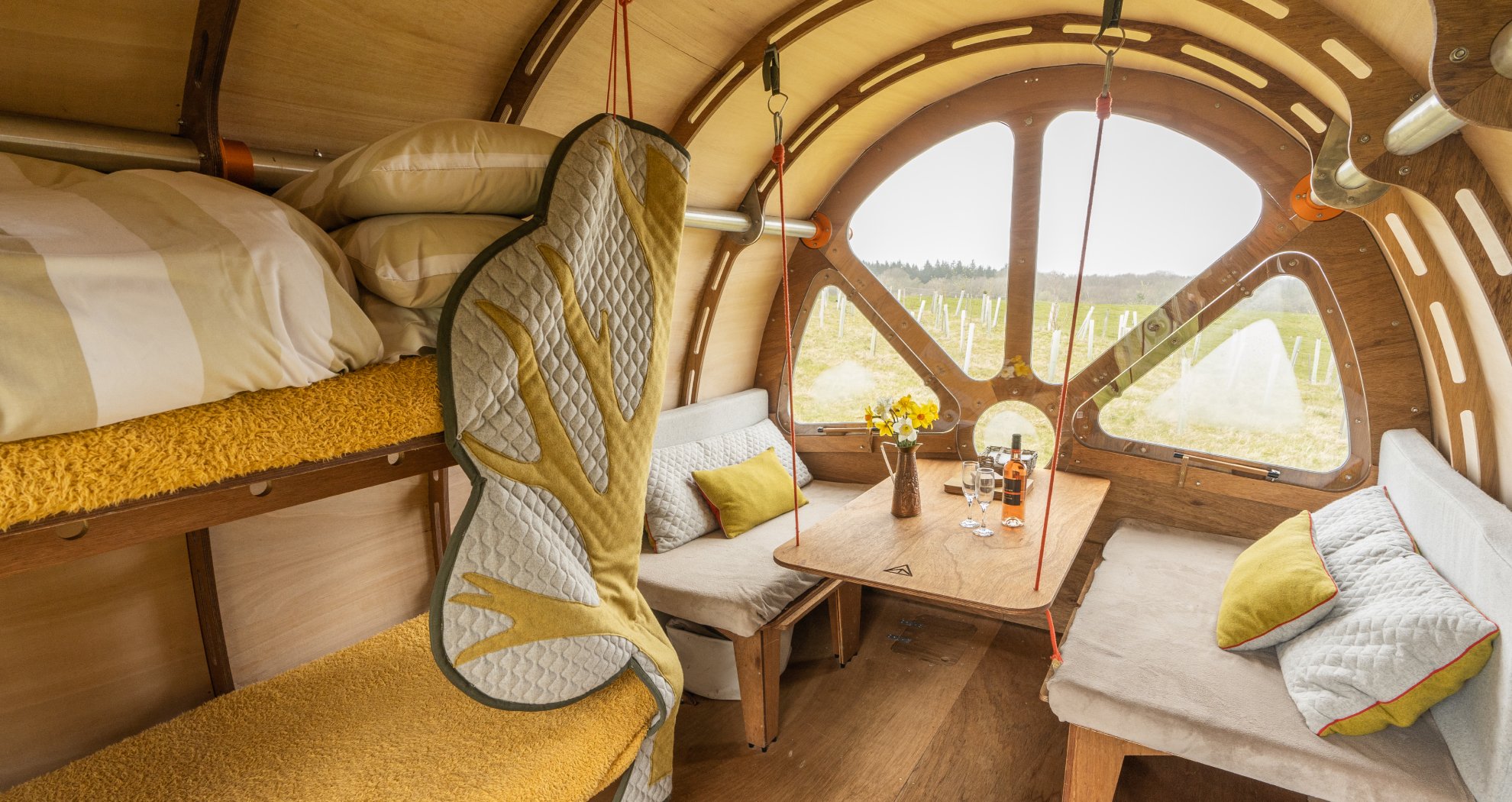Glamping’s taking off across the Americas, and if you’re thinking about jumping into this mix of nature and luxury, you’re in good company. At Tree Tents, we’ve been digging into what makes a glamping operation tick, especially for those looking to start fresh in the U.S. We’ve tapped into expert advice to break down the business models you can choose from—each with its own flavor and fit. This guide’s packed with insider tips and a few handy resources to help aspiring glamping operators like you find the right path, whether it’s a cozy retreat or a bustling campground. Let’s dive into the options and see what might spark your next big move.
Franchise Model: A Ready-Made Start
The franchise model’s like buying into a proven recipe—you team up with an established glamping brand, paying an upfront fee (say, $20,000-$50,000) and ongoing commissions (around 5-10% of bookings) to use their name, systems, and support. It’s a solid pick if you’re new to the game and want a head start—think marketing materials, booking platforms, and a blueprint handed to you. In the Americas, brands like Under Canvas offer franchise-like setups with luxe tents near national parks.
You’ll need land zoned for tourism—check your county’s planning office—and enough cash to cover initial costs, but it’s less about reinventing the wheel and more about following a trail. The U.S. Small Business Administration has resources on franchise financing if you’re curious. We see this model’s appeal—our cabins could slot into a franchise setup, though we’re more about empowering your vision than branding it ourselves.
Corporate Model: Big Scale, Big Investment
Going corporate means thinking big—multi-unit sites with hefty investment, often $1 million or more, backed by investors or a company. Picture 20-50 units across a sprawling property, complete with clubhouses, pools, or restaurants—like The Resort at Paws Up in Montana, sprawling over 37,000 acres. It’s high stakes, needing serious cash flow (think $500-$1,000 nightly rates) and staff to manage, but the payoff can hit millions annually if you nail it.
You’ll need land with utilities (water, electric hookups can run $10,000-$50,000 to install) and a team to handle operations—think 5-10 staff for a mid-size site. It’s not for the faint-hearted, but for those eyeing a luxury glamping site, it’s a model to watch. Our Birdhouse, a tiny cabin for sale, could fit into a corporate cluster, adding a quirky touch without breaking the bank.
Private Ownership: The Classic DIY Route
Most glamping in the Americas starts here—private owners, often families or couples, turning their land into a small-scale retreat. It’s grassroots, with 1-5 units (startup costs around $10,000-$50,000), and you’re in charge of everything—setup, bookings, guest chats. Think a few tents or cabins on a rural plot you already own, keeping it simple and personal.
You’ll need to check zoning (rural "agricultural" zones often allow "recreational use" with a permit—$200-$500 in fees) and plan for basics like portable toilets ($100/month rental) if plumbing’s not an option. The American Land Council offers zoning basics to start. It’s a lean way to test the waters—add a unit like our Birdhouse later if it takes off.
Lifestyle Model: Living the Glamping Dream
The lifestyle model’s about sharing your passion—maybe you’re a farmer adding a yurt or a craftsperson with a wooded lot. It’s small, personal, and weaves your story into the stay—think 2-3 units at $100-$200/night, with you greeting guests over coffee. In the Americas, this often ties to rural diversification, like a Midwest farm pivoting to glamping.
Start with land you own—check local health codes for sanitation (a compost toilet runs $1,000-$2,000)—and keep it low-key with minimal staff. It’s less about profit (maybe $10,000-$20,000/year) and more about lifestyle, but it can grow. Our cabins could fit here, though we’ll leave that idea for you to mull over.
Events Model: Glamping with a Twist
Events glamping is popping up—think festivals, weddings, or retreats with 5-10 temporary units ($150-$300/night). You set up luxe tents or pods for a weekend, cashing in on group bookings—say, $5,000-$15,000 per event. In the U.S., sites near festival hubs like Colorado or California’s wine country thrive on this.
You’ll need portable setups (tents or pods, $2,000-$5,000 each) and a special event permit (around $100-$300 per county). The Eventbrite Festival Guide has planning tips. Our Airspace, a glamping pod for sale, could slide into this model—lightweight and quick to assemble for a pop-up vibe.
Budgeting Your Glamping Startup
Money’s the backbone—pros say a small site (3-5 units) starts at $20,000-$50,000, covering land prep ($5,000-$15,000 for grading), units ($3,000-$10,000 each), and utilities (e.g., $500 for a solar kit, $2,000 for a well pump). Add $5,000-$10,000 for permits and marketing (a basic website’s $500-$1,000). Aim for 50-60% occupancy at $150/night—year one could net $15,000-$30,000 after expenses.
Scale up later—10 units at $200/night could hit $60,000-$100,000 annually. Keep a contingency fund (10-15% of startup) for surprises like storm repairs. It’s a grind, but the numbers can work if you start lean and grow smart.
Making Your Glamping Site Stand Out
Guests want unique—experts push for quirks like stargazing decks, local art, or guided hikes. Add a personal touch—maybe a welcome basket with regional snacks ($5-$10 each)—and keep it cozy with heat for cooler months. In the Americas, tying into local culture (e.g., a Southwest adobe vibe) can seal the deal.
We’re inspired by that—our cabins are built to spark curiosity, whether it’s a treetop perch or a sleek pod, giving your site a story without needing much extra fluff.
Ready to Start Your Glamping Journey?
We’re pumped about these glamping models—and we’d love to help you find your fit. Whether you’re eyeing prefab treehouses for sale or just brainstorming, check out our lineup or reach out via our contact form. Let’s turn your glamping dream into a thriving operation!










